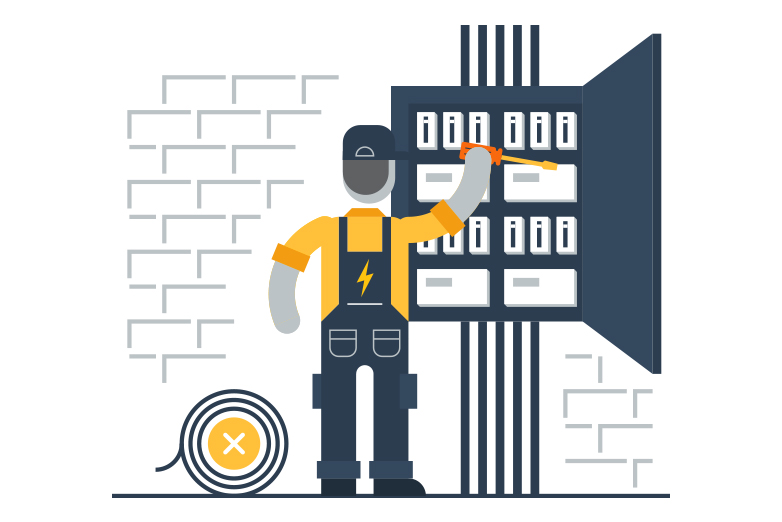
This comprehensive guide touches on topics like broadband speeds, the factors that determine your recommended internet speed, and even how to reassess your needs based on usage. We’ll help you understand the complexities of broadband speeds, ensuring you make the right decision for your specific needs.
Broadband speeds
We all connect through the convenience of the internet, whether that’s home wireless broadband or other similar options. But this begs the question: how fast should my broadband speed be to keep up with the ever-evolving online demands?
Understanding the following terms is the foundation for decisions on internet plans.
- Mbps. Internet speed is commonly measured in Megabits per second (Mbps).
- Download speeds. This refers to the speed at which you receive files from online sources.
- Upload speeds. This refers to the speed at which you send files online.
When providers speak of speeds, they’re generally referring to Mbps, but download and upload speeds are equally crucial. For instance, someone watching shows online might prioritise download speeds, while someone posting on social media might be more concerned about upload speeds.
Factors determining your required internet speed
Number of users (households vs workspaces)
From a solo apartment to a modern office, the number of users on an internet connection drastically influences its speed.
When multiple users hop onto the same connection, it can lead to bandwidth congestion, causing a dip in the quality of the connection. Its simple when you imagine the internet as a highway. The more cars (users) on it, the higher the chance of a traffic jam (slowdown). Thus, it’s crucial to anticipate the number of concurrent users and select a broadband plan accordingly to maintain a seamless online experience.
Kinds of online activities
Not every online activity demands the same speed. While checking your emails might require only a modest speed, streaming the latest 4K movie or indulging in a high-stakes online game might make your internet feel slow.
The quality of the online experience isn’t just about raw speed; it’s about ensuring that the speed is matched to the tasks at hand. The key is to find the right balance for a smooth and uninterrupted journey.
So if you’re browsing through some recipes or reading the news, know that speeds of up to 25 Mbps download and 4 Mbps upload are optimal and can work for two users.
However, if you’re streaming HD videos or queueing up for an online game, you’ll want a slightly higher speed of up to 49 Mbps download and 16 Mbps upload for three to four users, or perhaps even up to 96 Mbps download and 16 Mbps upload for four or more users.
Types of devices connected
Your device can play a significant role in your internet speed. Whether it’s a state-of-the-art gaming console, a work laptop, or a decade-old desktop, the devices capability can act as an accelerator or a bottleneck.
What’s more, the proximity of your device to the network hub also matters. Devices further away might experience reduced speeds, especially on Wi-Fi networks. Think of it as shouting across a vast field. The farther you are, the fainter your voice becomes, and the same concept applies to the signal from a Wi-Fi internet service.
Frequently Asked Questions (FAQs)
How can I test my current broadband speed?
Testing your broadband speed is simpler than you might think. It’s essential to occasionally test your speed to ensure you’re getting what you signed up for. To do this, you can:
- Use the in-house speed test provided by your internet service provider if available. On the other hand, you can also use a reputable third-party speed test website or application.
- Compare your subscriber connection agreement with the reading you get. This document will typically include details about the minimum, normally available, and maximum speeds associated with your broadband plan.
- Run multiple tests at varied hours. Internet speed can vary depending on network traffic and other factors, so it’s good practice to test at different times of the day to get an average reading.
Are there any hidden factors that can affect my internet speed?
There are various external factors that can impact the speed of your connection. Some of these elements include:
- Wi-Fi interference and signal strength. Multiple Wi-Fi networks, electronic devices (even if they’re not connected to your internet), or physical obstructions can reduce signal strength, which in turn affects speed.
- Hardware and software issues. An outdated router, modem, or device can hinder the speed and efficiency of your connection.
- Server/hosting delays. The speed at which a website or online service responds can also dictate how fast your internet feels.
- File types and sizes. Larger files take longer to download and upload, affecting perceived speed.
- Plugins and browser compatibility. Some plugins in your browser and even browser versions might not be optimised for certain online activities.
- Computer cache. A cache filled with old, temporary data can slow down your browsing experience.
How often should I reassess my broadband needs?
Your broadband needs can change based on various factors, so a regular assessment is crucial. It’s best practice to assess your broadband needs every year, when you change your WiFi setup, and when you notice persistent issues.
- Evaluate your needs annually. Technologies, services, and even your usage patterns evolve, making it vital to assess your broadband needs at least once a year.
- Monitor after making a significant change to your setup or usage. Perhaps you’ve added more devices to your network, started working from home, or begun streaming more content these are good times to reassess.
- Check when there are persistent issues. Slow internet speeds or recurrent disconnection issues might indicate it’s time for a plan upgrade.
Ultimately, ensuring that your broadband plan aligns with your current requirements will not only provide a better internet experience but can also potentially result in cost savings if you choose a speed that fits with your usage or activities online.
Key Points to Remember
- Mbps, or Megabits per second, is the universal unit of measurement for internet speed.
- Download speed refers to the speed at which you receive files and content from the internet.
- Upload speed dictates how swiftly you can send data to the internet.
- The more users and devices connected to wireless broadband, the higher your speed requirements will be.
- What you do online also demands different speeds, where activities like checking emails will require modest speeds and activities like streaming HD movies will require higher speeds.
Making the right choice for broadband speeds
Whether youre securing an internet plan for your household or business, understanding concepts like Mbps, download and upload speeds, and the factors that affect your broadband speed requirements puts you in a prime position to make a suitable decision for your specific internet usage.




